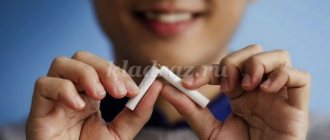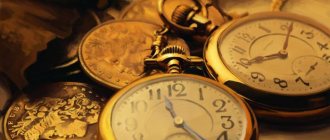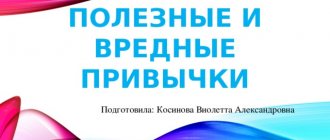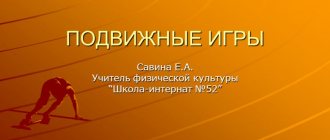Stories about water for a child should be exciting and fun! Knowledge about water is necessary if, along with other components necessary for the proper development of personality, you pay attention to such a component as the education of environmental culture. Today, cultivating a correct attitude towards nature and the resources that we use is one of the main tasks of preschool and general education institutions. In the process of working on environmental culture, children need to be taught about water. After all, water is the basis of life on Earth; without this resource, humans cannot exist, and the limited supply of fresh water is forcing entire nations to seriously think about this problem even now.
How to teach children about water?
The choice of topic and method of narration depends on the age of the children. Usually special educational cartoons are used for preschoolers. This way, children can better master the material and perceive information; preschoolers find it easier to hear from the main characters of their favorite cartoon than in a regular lesson.
School-age children can be taught about water both in regular classes and in non-standard forms. For example, you can conduct experiments with water in the context of a certain discipline, or watch scientific films about water. It is important to choose the right material and convey really important and interesting information to children.
Amazing Facts About Water
- A person drinks about 1 cubic meter (1000 liters) of water per year.
- Growing coffee beans weighing one cup of coffee requires 200 liters of water. (We recommend reading 80 facts about coffee that true lovers of this drink will appreciate).
- A five-minute shower uses 200 liters of water.
- To produce 1 kg of beef, 15,000 liters of water are required when the life cycle of cattle is taken into account.
- A leaky faucet dripping at the rate of one drop per second can waste more than 11,355 liters of water per year.
- To make half a liter of beer, 150 liters of water are required.
- There is about the same amount of water on Earth now as there was millions of years ago.
- To produce one kilogram of cotton (enough for a shirt and jeans) requires 10,000 liters of water.
- If all the water vapor in the Earth's atmosphere fell as rain at one time, it would cover the Earth with only 2.5 cm of water.
- To produce a gallon (3.79 liters) of corn ethanol, a total of 170 gallons (644 liters) of water are required, from irrigation to the final product. On the other hand, it only takes five gallons (19 liters) of water to produce a gallon (3.79 liters) of regular gasoline.
- An ordinary pool loses about 3,785 liters of water per month through natural evaporation alone.
- A bath uses up to 70 liters of water, while a five-minute shower uses between 35 and 90 liters.
- About 25,700 liters of water are required to grow a day's food for a family of four.
- One acre (40 acres) of corn evaporates about 15,000 liters of water every day.
- A chicken needs 120 liters of water for one egg.
- It's amazing but true that there is as much water on planet Earth as there was almost a million years ago, although resource use has increased dramatically over the past 100 years.
- Americans use up to 21.5 billion liters of water every day to flush toilets.
- It takes about 24 liters of water to make half a kilogram of plastic.
- It takes about three and a half tons of water to produce a kilogram of rice.
- It takes about 10 tons of water to make a pair of jeans.
What to tell children about water?
A story about water for school-age children should include interesting facts and reveal previously unexplored issues.
Interesting facts about water
Water is the basis of life on our planet. At the same time, this substance is one of the most common on Earth. But fresh water reserves are still not very large; some countries are already experiencing great difficulties in providing the population with water, and people there have to save every liter of water.
An ecological fairy tale about the water cycle in nature for children 5-7 years old
An ecological fairy tale about the water cycle in nature “The Adventures of a Droplet.”
The author's fairy tale introduces children to the water cycle in nature in a form accessible to them. The fairy tale is intended for children of senior preschool age.
Author: Borisova Nadezhda Alekseevna, teacher, GBOU School 1191, Moscow. Purpose: To give an idea of the water cycle in nature.
Tasks:
1. Explain to children, using fairy tales, such natural phenomena as clouds, precipitation, and the water cycle in nature. 2. Arouse interest in natural phenomena and their origin. 3. Cultivate kindness and responsiveness.
Fairy tale "The Adventures of a Droplet."
There is a lake on our planet and a curious droplet lives in that lake. She was always interested in everything, she watched fish, snails and even birds. One day, the droplets started talking among themselves, one of them told how beautiful the lake looked from above, from the sky, how big it was, how many interesting things there were around it. And our little one wanted to look at all this beauty. She rose from the depths to the surface of the water and tried to rise, but she couldn’t. She asked the wind for help, it blew on the water, but it didn’t work, it blew harder and harder, but the droplet still remained in the lake. The droplet was upset and almost cried, but then the sun warmed up and our droplet turned into steam and rose high above the lake. She looked down and saw her lake, and the forest, and even a small river. Then the wind blew, he wanted to ask how she managed to rise into the sky, but the droplet, turning into steam, was very light and he blew it away. She collided with other droplets and there were so many of them, a whole cloud. She wanted to go back down into the lake and tell her friends what she saw, but the wind drove the cloud so far away that the lake was no longer visible. The wind stopped, but it became so cold that the droplets began to press against each other and turn into heavy drops and fall to the bottom, so rain began to fall from the cloud. The drops fell to the ground, they became so close together in the cloud that they were afraid to get lost, they grabbed hands and turned into streams. Streams merged into rivers, rivers flowed into lakes and seas. And when the sun warmed up, curious droplets rose into the sky and everything was repeated again, only they were dripping in a new place. This is the journey the droplet has made, and this journey is called the water cycle in nature.
To reinforce the knowledge gained, you can conduct an experiment.
Water cycle in nature
Materials: large plastic jar, smaller jar and plastic wrap. Procedure: Pour some water into the vessel and place it in the sun, covering it with film. The sun will heat the water, it will begin to evaporate and, rising, condense on the cool film, and then drip into the jar.
We recommend watching:
Analytical report of the preschool educational institution on the organization of work. Section “Environmental education” Summary of the conversation with children of the senior group. Topic: Energy saving Scenario for an environmental holiday in kindergarten. Senior preparatory group Ecology quiz game for kindergarten. Senior group
Similar articles:
Summary of a comprehensive lesson for children 5-6 years old on the topic “Take care of the forest”
Ecological holidays and leisure activities in preschool educational institutions. Scenarios
Ecological holiday "Earth Day" at the preschool educational institution. Senior group
Ecology classes in the senior group of kindergarten
Ecology in music
Watch the video film “About water for a child”:
Humans are 70% water. Some inhabitants of the underwater world consist of 99% water. This once again confirms the theory that life appeared in water and only after millions of years through evolution was it able to reach the surface.
Despite the prevalence of water on Earth, finding it outside our board is quite problematic. If it exists on other celestial bodies, it is only in small quantities or in the form of water ice mixed with debris.
Scientists suggest that the presence of such an amount of water on Earth indicates a turbulent history of the planet’s development. According to experts, such water reserves could only be formed as a result of numerous collisions of comets with the Earth. Comets are mainly composed of water ice and cosmic dust.
A person can live without water for only a few days. Water is the basis of many processes in the body. For normal functioning, the human body needs 1.5-2 liters of water daily.
Types of water
A unique feature of water is that it can be found on the planet in different states:
- Scientists have identified fourteen states of solid and five states of liquid water.
- Hot water takes longer to freeze to ice than cold water.
- The density of ice is higher than the density of water. Therefore, ice floes float on the surface of seas, rivers and oceans.
- The largest reserves of ice are concentrated on the polar caps of the Earth's poles.
- Watermelon is 93% water, and jellyfish is 99% water.
- The average temperature of the world's oceans is 4 degrees higher than the layer of air closest to the surface of the water.
- Water can burn if it contains a large amount of methane.
- In South Africa, you can drink natural tap water that does not require purification. Finland ranks first in terms of the purity of this resource.
- The Antarctic lake is 12 times saltier than the sea, so it freezes only at 50 degrees below zero.
- World Water Day is celebrated on March 22.
Conversations with children about water: where to start?
Conversations with children about water: where to start?
Conversation No. 1
"Water Around Us"
The purpose of the first conversation is to introduce the child to the concept of “water” and give him a general idea of the states in which water can exist on Earth. During the conversation, you can use the globe as a visual aid. Show your child that there is more water on our planet than land. Explain to your child that in lakes and rivers the water has no taste, and in the seas it is salty. Also during this conversation, it is worth explaining to the child where the water comes from. And the fact that the water that flows in underground rivers is very valued by people, because it is considered the cleanest and tastiest. Tip: Sometimes even water advertisements can be a great example of how expensive drinking water is.
Conversation No. 2
"Water Around Us" (continued)
The purpose of the second conversation is to convey to children the importance of water for humanity. During the second conversation, it is worth explaining to the child that although there is a lot of water on Earth, not all of it is suitable for humans. After all, we drink only peppery and clean water, not salty. It’s just that we have much more salty food. It is also worth adding that there are countries in which there is a water crisis. Therefore, water must be conserved.
Conversation No. 3
“The Journey of a Droplet” (draw a cycle)
The purpose of this conversation is to let children understand how the water cycle occurs in nature. During the conversation, you may need a visual aid - a picture depicting the same cycle, but drawing with children will be better. You can present this process to a child as if a drop of water lives in the sea. But sometimes this droplet travels to a cloud. A lot of droplets collect on the cloud, and then they all descend to the ground and, together with the streams, fall into the rivers, and from the rivers back to their home - into the sea. You can conduct an experiment with water evaporation.
Conversation No. 4
"Without water there is no life"
The purpose of conversation No. 4 is to form in the child the idea that animals and plants cannot live without water. During the conversation, you can give your child an example of plants in nature. After all, it rains on them from time to time. But if you don’t water a plant in a pot, then soon it will simply dry out and die. That is why you should always make sure that the plants have enough moisture. You can also give an example with animals that in the wild can drink from a natural reservoir, but at home - only if we help them.
Conversation No. 5
"Sorceress Water"
The purpose of this conversation is to explain to children such fundamental concepts as rain, fog, snow and others. During the conversation, it is important to draw the children’s attention to the fact that water very often appears to us in different states. Sometimes it is liquid and sometimes it is solid. You should also draw children's attention to the diversity of the environment, which is created precisely thanks to the magic of water.
Conversation No. 6
"Save water"
The purpose of this conversation is to teach children to save water, to formulate in them the idea that water is a limited resource that needs to be protected. Explaining to children why water should be conserved is quite simple. For example, you can tell your child about the path water takes before it gets into our tap, and we use it. You can also talk about the fact that at first the water is in the river, a person can direct it into pipes. However, it still does not immediately reach our house, because we receive purified water. In order for our water to be clean, a lot of people work and their work must be respected. Therefore, you should always turn off the tap and waste water.
Conversation No. 7
"Rain"
The purpose of this lesson is to become familiar with the concept of “rain”. During the conversation, you should explain to the children what state the water is in when it rains. You should also talk about the fact that rain is a very good thing and explain why. This is important, because sometimes children think that rain is bad, because you can’t go for a walk in rainy weather. It is necessary to explain to them what the benefits of rain are.
"Sounds of Nature: The Sound of Rain"
Conversation No. 8
"Fog"
The purpose of this lesson is to familiarize yourself with the concept of “fog”. During this conversation, you should talk with the child about the state of the water, which we call fog, and how it affects all living things. That fog can prevent a person from driving a car. Sometimes accidents occur due to fog and planes cannot fly.
Conversation No. 9
"Hail and Snow"
The purpose of this lesson is to become familiar with the concept of “snow and hail.” During this conversation, you should talk with your child about the state of the water, which we call hail or snow. You should also tell children about such concepts as “snow” and “hail”. It must be explained that when water vapor enters conditions with very low temperatures, snow or hail may fall. Reception, it always snows in winter, but hail can fall at any time of the year. It should also be explained that hail is a destructive phenomenon that can destroy crops, injure people and animals, and damage homes and cars. But snow is good. After all, it reliably protects the plant from the most severe frosts.
Conversation No. 10
"Dew"
The purpose of this lesson is to familiarize yourself with the concept of “Dew”. During this conversation, the child must understand that water cannot always return to earth from the sky; sometimes it does not reach there. It is necessary to explain to children that dew falls due to the fact that some objects change their temperature to a colder one and droplets of steam, before reaching the clouds, lie on the ground again. Most dew can be found in grass; dew usually falls on summer nights. In this case, you can also conduct an experiment with changing the temperature of objects and water vapor.
Conversation No. 11
"Reservoirs"
The purpose of this conversation is to explain to children that there are man-made and natural reservoirs. During the lesson, children should be explained, and best of all, visually shown (in pictures) that there are many types of reservoirs in nature. So, for example, rivers, lakes, ponds, seas, oceans (add that there are only 4 of them) are considered natural bodies of water. But pools and fountains are the work of man. Also, during this conversation, the child should be informed that there are underground reservoirs. Very clean and healthy water flows in underground rivers, and if it comes to the surface, a spring is formed.
Little-known and surprising facts about water
- Four liters of gasoline can contaminate approximately 2.8 million liters of water.
- To save 85 billion gallons (321.725 liters) of water every day, all it takes is for everyone in the United States to shower one minute shorter.
- Bottled water can be up to 2,000 times more expensive than tap water and may not be as safe.
- The weight a person loses immediately after intense exercise is water weight, not fat.
- Water makes up approximately 80 percent of a baby's body weight at birth.
- UV light is a safe way to treat water because UV light is effective in killing 99.99% of waterborne harmful microorganisms.
- On average, women in developing countries walk 6 kilometers a day to provide water for their families.
- A working toilet can waste up to 200 liters of water every day.
- In the USA and Canada there are more than one and a half million kilometers of water pipes and aqueducts, which are enough to circle the globe 40 times.
- Since the average tap produces seven and a half liters of water per minute, you can save up to 15 liters every morning by simply turning off the tap while you brush your teeth.
- For the period from 3000 BC. Until 2012, 265 cases of severe water disasters were known to have occurred.
- Americans use 21.5 billion liters of water to flush toilets every day.
- All Americans combined drink more than one billion glasses of tap water per day.
- $260 billion is the estimated annual economic loss from poor water and sanitation services in developing countries.
- Forty billion hours are spent collecting water in Africa alone. (We recommend learning interesting facts about Africa and its countries)
Do you think it is possible to get a rainbow at home? Is it possible to grow real crystals in an ordinary glass? Will it be possible to assemble a desalination plant from scrap materials? The answer is yes, and it’s not about alchemy or witchcraft! You can do all this and much more at home with your children. And simple water and a set of basic gadgets will help us.
Experiments with pure water
Even the most ordinary water flowing from a tap is not nearly as simple as it seems. Its physical properties are fraught with many mysteries and secrets. Let's try to unravel some of them.
Rainbow. It turns out that this most beautiful natural phenomenon, delighting both children and adults, can be observed not only in the sky after rain. Do you miss the rainbow? So create it at home! For the experiment, you need to choose a sunny day, stock up on a mirror and a relatively large vessel with water, like a three-liter jar. Place the mirror in the jar, catch a ray of sun and watch in amazement as the sunbeam turns into a rainbow.
Water in a sieve. A great example of how popular sayings can be refuted with the help of science. For the experiment, you will need a sieve for sifting flour, a glass of water and vegetable oil or paraffin. First, pour the water into a sieve. As you can see, it quietly seeps through the cells. Now lubricate the cells with oil or paraffin and repeat the experiment. The water remains in the sieve without spilling out anywhere! This is explained by the force of surface tension. By the way, you can tell your child that with the help of this magical power, water strider insects run on water, and when it rains, you can observe how drops do not immediately fall into a puddle, but first bounce off its surface.
Lava lamp. The experience is based on the fact that water does not mix with some liquids. Take a transparent bottle and fill two-thirds with vegetable oil. Add water mixed with any food coloring. The water will immediately rush down, since it is heavier than oil, but that's not all. Now throw a quarter of a tablet of any “fizzy” medicine into the water and together watch the dance of colored bubbles.
Experiments with ice and boiling water
Cold and hot water have different properties, which we have to test experimentally. Just don't heat the water too much to avoid getting burned.
Where did the water go? Pour water into a glass to the very top. Now carefully place an ice cube on the surface and observe. After all, it is immediately clear that as soon as the ice melts, there will be more water in the glass, and it will begin to pour out. But the result will greatly surprise the child, because the melted ice added almost no water to the glass. The answer is simple - when water freezes, it expands, and the volume of the ice cube will be greater than the volume of melt water. Don't believe me? So let's check this with a second experiment.
Ice in the pipe. This property of water causes a lot of trouble for utility services in cold winters. Take any hollow tube, such as a cocktail straw. Seal one edge with plasticine, fill with water, cover the other edge and leave in the freezer for a while. When freezing, the volume of water will increase and the ice “sausage”, squeezing out one of the plasticine plugs, will end up outside.
Fast and slow molecules. A simple but impressive experience for which you will need glasses of hot and cold water and a dropper of dye. Add a drop of dye to each of the glasses and watch which water turns color first. Due to the fact that hot water molecules move at a higher speed, the water in this glass will color much faster. Using this experiment, you can clearly explain to your child such “adult” concepts as diffusion and Brownian motion.
Experiments with water and salt
By dissolving various minerals in itself, water acquires many unusual properties. And even your kitchen, which always has the simplest salt, can turn out to be a laboratory for interesting experiments.
Will it float or sink? Place a raw chicken egg in a jar of water. Since the egg is heavier than water, it immediately sinks to the bottom of the jar. Now add a few tablespoons of salt to the water. The density of the liquid increases, and the water seems to push the egg to the surface. By the way, by adding salt gradually, you can achieve the so-called “zero buoyancy”, when the egg will neither float nor sink, hovering in the middle of the jar.
We grow crystals. Dissolve the maximum amount of salt in a vessel with warm water. Then we lower the thread into it and wait a few days. The salt water will rise up the thread and then evaporate, leaving wonderful crystals on its surface, similar to frost in winter. To make crystals grow vertically, wrap the thread around a knitting needle or piece of wire.
Desalination plant. A serious experience, repeatedly shown in television programs dedicated to survival on a desert island where there is no drinking water. It takes time and patience, but as a result you will become cooler than Robinson Crusoe for the child. So, pour salted water into a plastic bowl. Secure the glass to the bottom so that it does not float or overturn. You can use waterproof glue or simply place a weighty object on the bottom of the glass. Cover the bowl hermetically with cling film, making a funnel with the indentation above the glass, and expose the structure to the sun. Evaporating from the basin, the desalinated water will condense on the film and flow directly into the glass. You can complete the picture by solemnly drinking clean water from a glass.
Eco-style experiments
All conceivable experiments have been carried out, experiments have been carried out, but your little scientist has just gotten the hang of it and demands more? Well, if you live in St. Petersburg, you are in luck. Now you can entrust your child to the specialists of the Museum of Water, which has a Children's Ecological Center. At Shpalernaya, 56, a whole scientific base has been created for young children. No boring lectures - interactive classes at DEC are the least similar to school lessons.
The little ones can go on a journey through the water cycle, around St. Petersburg and even across the Baltic Sea with the cheerful Droplet. There is an almost real ship, toys in the form of Baltic inhabitants, a laboratory with a microscope, and they show cartoons!
Older children can enjoy the Baltic Cruise, where everyone will feel not just a spectator, but a direct participant in the action. The effect of complete immersion is created by a film with stereo-holographic effects and 3D animation.
You will find all the details on the Center's website.
The Museum of Water, equipped with the latest technology, will be a comfortable place for a modern child, surrounded by electronic gadgets from infancy. After all, it is not so important by what means a careful attitude towards water and environmental consciousness are instilled. The main thing is that over time it turns from a fun game into a habit.
Photo: Water Museum, Photo: Water Museum, Yutorial.com, Learning4kids.
Photo: Water Museum
, Yutorial.com https://yutorial.com/ , Learning4kids. www.learning4kids.net/wp-content/uploads/2012/08/How-to-make-Hanging-Crystals-6.jpg?98f3a8





